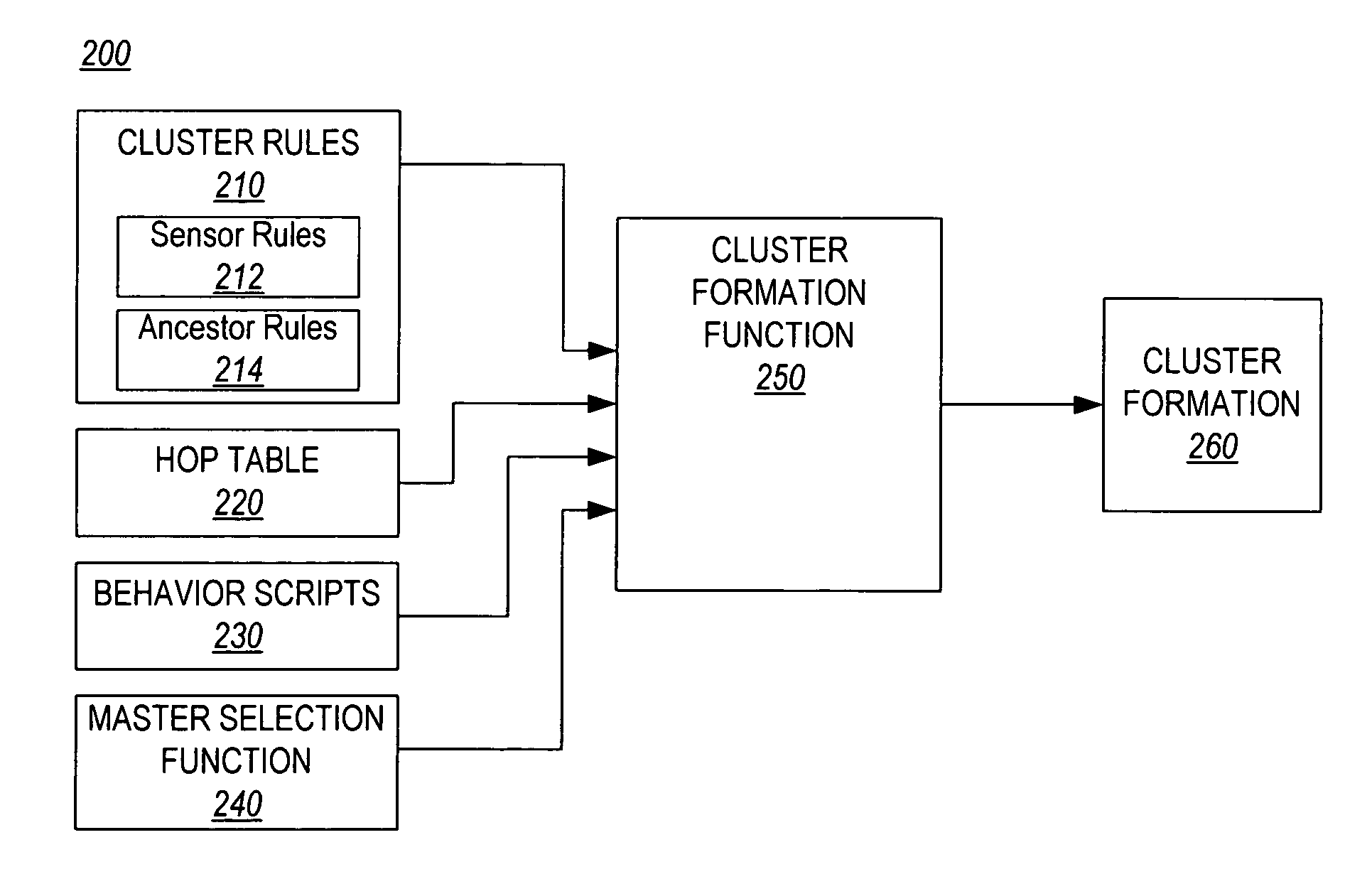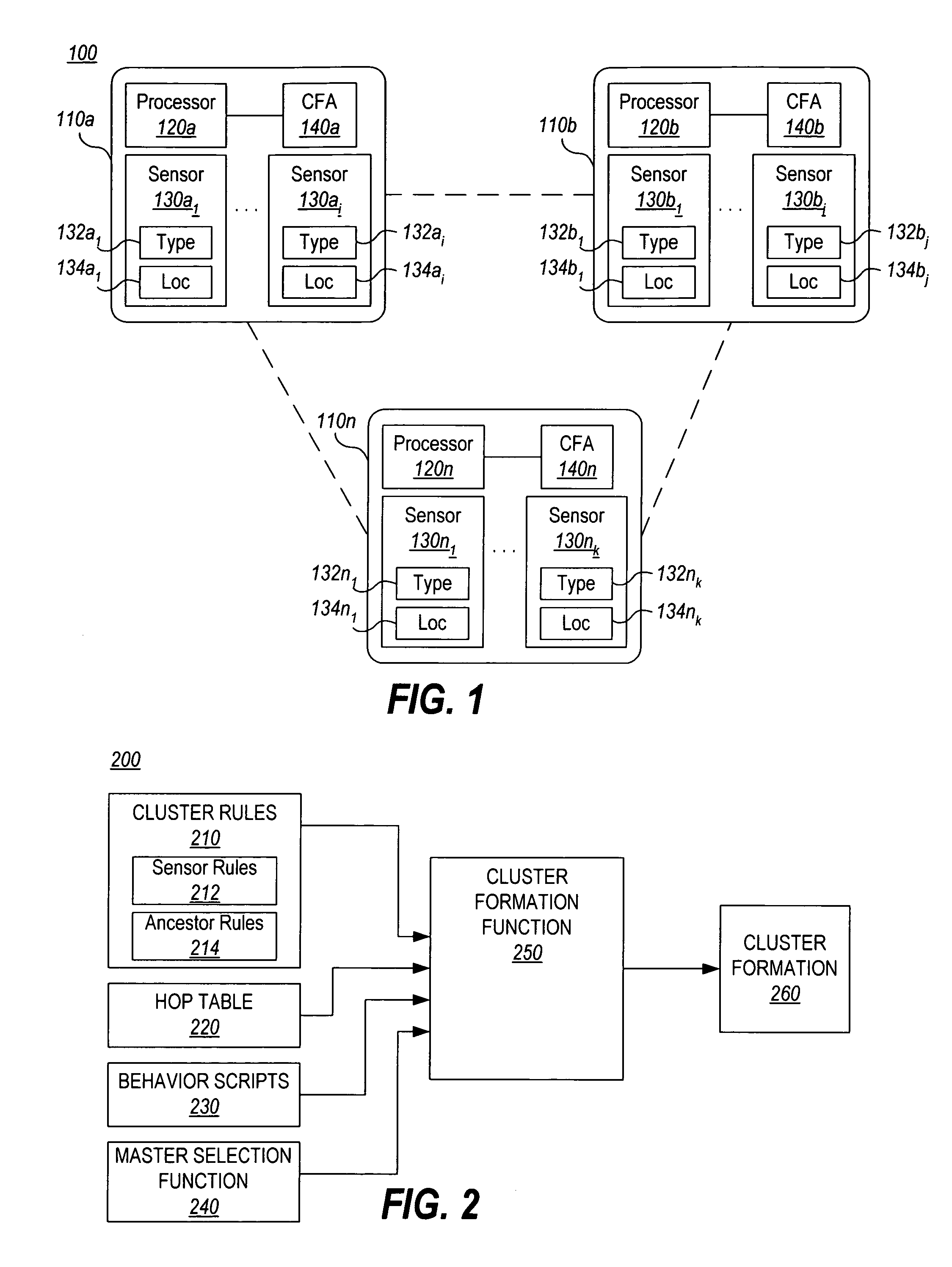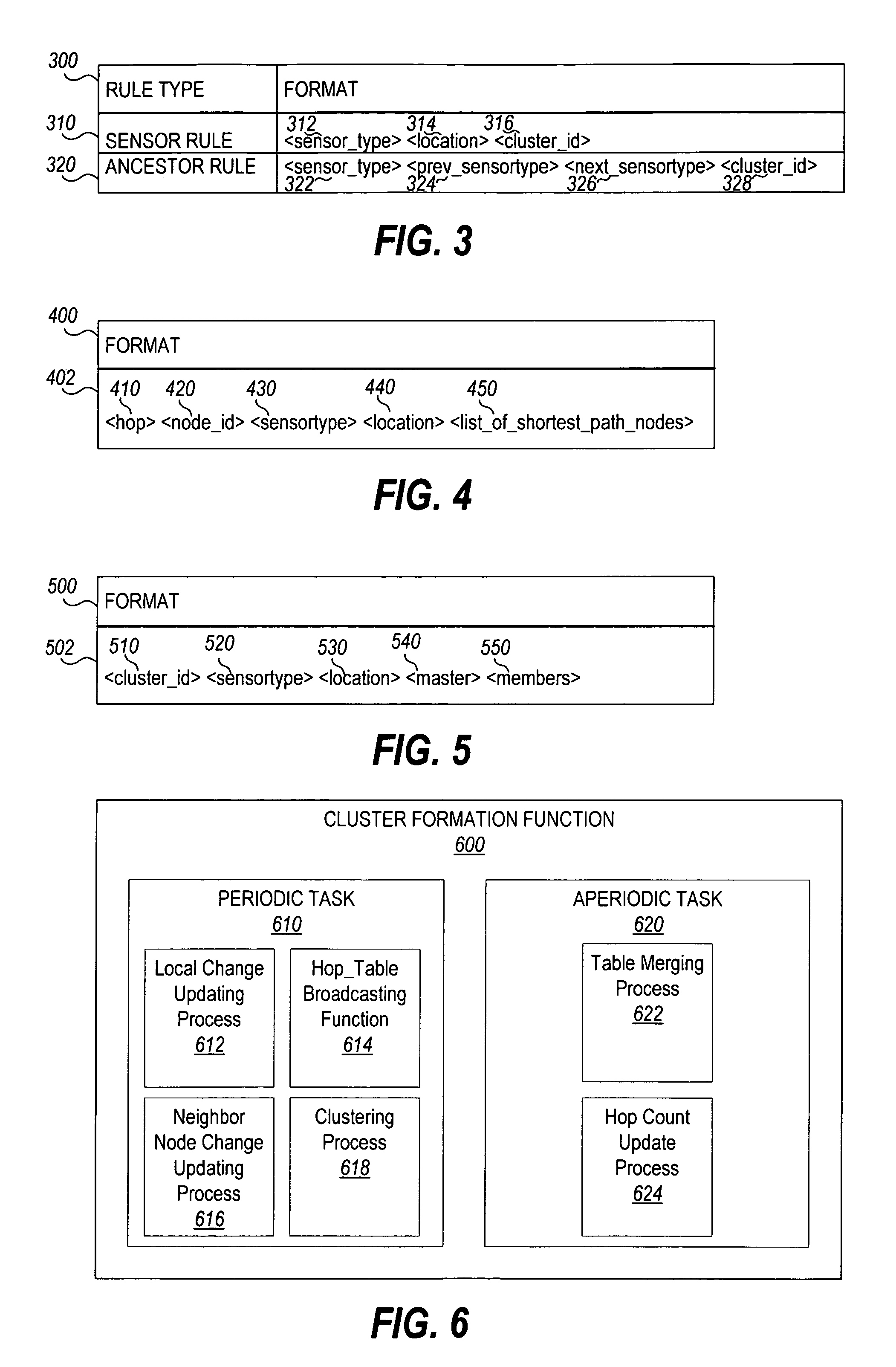Methodology to program sensors into collaborative sensing groups
- Summary
- Abstract
- Description
- Claims
- Application Information
AI Technical Summary
Benefits of technology
Problems solved by technology
Method used
Image
Examples
Embodiment Construction
[0021]For simplicity and illustrative purposes, the principles of the embodiments are described. Moreover, in the following detailed description, references are made to the accompanying figures, which illustrate specific embodiments. Electrical, mechanical, logical and structural changes may be made to the embodiments without departing from the spirit and scope of the embodiments.
[0022]Embodiments of the invention employ a distributed algorithm to enable wireless sensor nodes to discover each other and to adaptively self-configure into sensor clusters to provide a desired functionality. These clusters may be thought of as “virtual” sensors, since they represent an abstract functionality of the actual physical sensors. Embodiments of the algorithm are based on “rules” for clustering and “behavior” scripts. Rules prescribe the properties that a network node should have in order to be part of a given cluster, for example, sensor type and location. Behavior scripts comprise actual progr...
PUM
 Login to View More
Login to View More Abstract
Description
Claims
Application Information
 Login to View More
Login to View More - R&D
- Intellectual Property
- Life Sciences
- Materials
- Tech Scout
- Unparalleled Data Quality
- Higher Quality Content
- 60% Fewer Hallucinations
Browse by: Latest US Patents, China's latest patents, Technical Efficacy Thesaurus, Application Domain, Technology Topic, Popular Technical Reports.
© 2025 PatSnap. All rights reserved.Legal|Privacy policy|Modern Slavery Act Transparency Statement|Sitemap|About US| Contact US: help@patsnap.com



